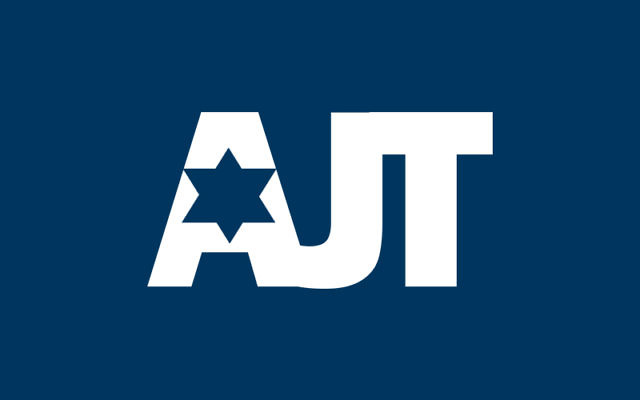Adar II: Finding Your Rhythm In The World
/BY DR. TERRY SEGAL/ // AJT CONTRIBUTOR// Terry Segal
The New Moon begins on Sun., March 2, 2014. We will celebrate Adar II with focus on Enchanted Key No. 7 for Movement. When we entered Adar I, our joy increased. Now it doubles. A great time for dance and celebration!
Adar II hosts Purim, March 15 this year, and spring on March 20. Skip through grassy knolls, shed the layers of heavy clothing and snowshoes we’ve been wearing this past winter and revel in the warm sunshine.
Dancing is customary for our people during festivals, mitzvah celebrations and weddings. The Krenzl invites the daughters to crown their mother with flowers and dance around her at the wedding of her youngest daughter.
The Mizinke brings the parents of the bride or groom to the dance floor when their last child is wed. The popular Israeli folk dance, Hora, was first performed here in 1924 and is often accompanied by the song, Hava Nagila. Israeli folk dancing gained popularity when the Zionists celebrated the joy of our homeland in Israel.
Ashkenazi Jews dance to klezmer music; think dance tunes and instrumentals morphed with American jazz. The Hasidic style of dance is said to purify the soul, elevate the spirit and unite community.
If you’ve ever engaged in Yemenite dancing, you know that it’s quite a cardio workout, involving hopping up and down in place. And who hasn’t done the Hokey Pokey and turned yourself around?
All types of movement offer great health benefits. The optimal exercise plan involves cardiovascular workouts, limbering and stretching exercises and weight-bearing routines.
Ideally, moving for an hour, four to six days a week increases your tolerance for social, emotional and environmental stress, while enhancing muscle tone. Endorphins, the body’s natural painkillers, are also released during exercise.
Back in the day, treatment following a heart attack involved bed rest. Now, patients are up and walking the halls as soon as possible
Yoga continues to be a physical and spiritual practice enjoyed by many. There has been controversy in some Orthodox groups about whether yoga practice might be equated with idolatry, due to its ties to Hinduism and Buddhism, the chanting of Sanskrit words, such as Namaste, the acknowledgment of the Divine in each of us, along with hands in “prayer position.” In some yoga studios, there are statues that depict both human and divine attributes.
Yoga is a Sanskrit word, meaning “union” and extends the connection between the self and the universal energy of the whole. The chanting of the sound, OM, is believed by some to be the original sound.
Yogic practice does have its roots in India, but the philosophy of strict ethical and moral codes of conduct, control over body postures, breath and withdrawal of the senses toward mastery over the body and mind, are concepts that seem more similar than not to our Jewish practices.
Jewish yoga enthusiasts have altered the practice to create Yoga with a Jewish Twist, Kosher Sutra and OmShalom Yoga. Among these are techniques for stretching the body in the formation of Hebrew letters or a word, in combination with spiritual focus.
Office Yoga, introduced by Darrin
Zeer, involve stretches performed in your office chair. The purpose is less spiritual and more for the release of tension. Even your eyes that stare at the lit computer screen all day get to move and are refreshed.
Holding the chair you sit in to perform gentle twists can massage away tension in muscles and nerves that, through repetitive movements, typically remains locked in place.
Gabrielle Roth, of blessed memory, was a lovely “trance dancer,” who combined contemporary music, theatre and poetry with shamanic rhythms and healing power. She authored the book, “Sweat Your Prayers.” Her son, Jonathan Horan, continues her work.
Several years ago, I had the extreme pleasure of dancing with them in a healing workshop. Gabrielle developed “Roth’s 5 Rhythms,” in which five universal rhythms of movement are defined, each with its own archetype.
They are as follows: flowing, staccato, chaos, lyrical and stillness. She believed that identifying your own natural rhythm and then practicing the others brings about balance and wholeness.
The secret to using the Enchanted Key for Movement lies in moving your body in ways that you enjoy. Change it up with the seasons to swim in summer and ski in winter. Vary the type of exercise with group classes ranging from Zumba to Hot Vinyasa Flow Yoga.
Vacuuming, raking leaves and shoveling snow all involve movement. Walking is still one of the easiest and most beneficial forms of exercise available. Stretch before venturing out and remember to “Shake it, don’t break it!”
Meditation Focus for Adar II
Quiet yourself and observe the movement of your breath as it flows in and out of your body. Reflect on Roth’s 5 Rhythms: flowing, staccato, chaos, lyrical and stillness. Consider which your natural rhythm in the world is. Which movement would you like to explore to bring balance to your life? What is one form of movement you are willing to commit to practicing for the month of Adar II?
Dr. Terry Segal is a licensed marriage & family therapist, Ph.D. in energy medicine, hypnotherapist and author of “The Enchanted Journey: Finding the Key that Unlocks You.”




comments